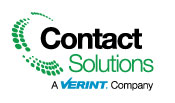 Agner Erlang was a Danish mathematician. A century ago, he developed a formula that affects your IVR capacity purchases today. Thanks to Erlang, if you’re planning to deploy an IVR system on premise, you can predict how much capacity you need to buy.
Agner Erlang was a Danish mathematician. A century ago, he developed a formula that affects your IVR capacity purchases today. Thanks to Erlang, if you’re planning to deploy an IVR system on premise, you can predict how much capacity you need to buy.
Erlang’s formula zeros right in on the busiest hour of the busiest day. That’s your peak traffic period, and unless you want angry callers you’ll need to buy just enough capacity to handle that peak. Erlang tells you how much.
The trouble is, when you deploy enough capacity on premise to handle the peak, you end up paying for a lot of capacity that goes unused in the valleys. In fact, you may be shocked at how much idle capacity you’re paying for when you buy a premise-based IVR system.
If you knew you would utilize less than 25% of your premise IVR system’s available capacity, would you still make that capital investment today?
Let’s do a quick calculation that compares the minutes you use to the total number of minutes available on a system. You can use this handy online Erlang calculator to plug in your own numbers, but I’ll give you a shorthand example:
- Estimated call volume: 30,000 minutes per day
- Busy hour traffic: 17% of daily minutes occur during the busy hour (this is typical)
- Blocking: 1% (this means there’s a 1% chance a call will come in when your system is completely busy- this too is typical)
Plug in those numbers and the Erlang calculator will tell you to buy at least 101 IVR ports to handle your 30,000 minutes per day.
How much capacity did you really buy? You bought enough to support 145,440 minutes of traffic, considering all the capacity available during the peak and across all the valleys throughout the day. You would be using just 20.6% of your system’s total available capacity.
When a system is idle a whopping 80% of the time, that’s very inefficient utilization of an expensive fixed asset.
IVR in the Cloud runs far more efficiently… typically with 50%-60% utilization compared to less than 25% utilization for most IVR systems on premise. A service provider is able to do this by spreading capacity across multiple customers whose traffic peaks don’t completely overlap. By utilizing assets more efficiently, this makes IVR in the Cloud a greener solution in more ways than one: it lowers costs, saves you money, and it’s a lot better for the environment.


